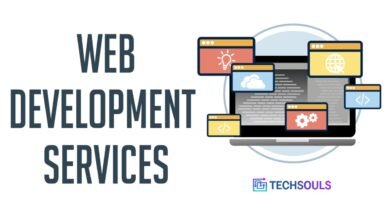
The generative AI hype that captivated the tech world for nearly two years appears to be reaching a critical turning point. Once hailed as the revolutionary technology that would transform every industry overnight, generative artificial intelligence is now facing what experts call a reality check. Recent data from Gartner shows that GenAI has officially entered the “trough of disillusionment” on their renowned hype cycle, suggesting that the initial euphoria surrounding large language models and AI-powered tools is giving way to more measured expectations.
This shift doesn’t mean generative AI is failing or losing relevance. Instead, it signals that organizations and investors are moving beyond the initial excitement to confront the practical challenges of AI implementation. From concerns about AI hallucinations and data quality to questions about return on investment, the landscape is evolving from blind enthusiasm to strategic evaluation. Understanding this transition is crucial for businesses, investors, and technology professionals navigating the complex world of artificial intelligence in 2025.
The Gartner Reality Check: AI Enters the Trough of Disillusionment
The Gartner hype cycle serves as a reliable indicator of how emerging technologies progress from initial excitement to practical adoption. According to Gartner’s 2025 Hype Cycle for Artificial Intelligence, generative AI has officially moved from the “peak of inflated expectations” into the dreaded “trough of disillusionment.” This progression happened faster than many predicted, occurring within just two years since ChatGPT’s public launch.
What the Trough of Disillusionment Means
The trough of disillusionment represents a critical phase where initial excitement wanes as organizations grapple with the practical realities of implementation. For generative AI, this means companies are discovering that the technology isn’t the magic solution they initially believed it would be. AI leaders continue to face challenges when it comes to proving GenAI’s value to the business, despite an average spend of $1.9 million on GenAI initiatives in 2024.
Perhaps most telling is that less than 30% of AI leaders report their CEOs are satisfied with AI investment returns. This dissatisfaction stems from several factors:
- Unrealistic expectations for AI capabilities
- Difficulty identifying suitable use cases
- Challenges finding skilled professionals
- Governance challenges including hallucinations and bias concerns
- Government regulations that may impede GenAI applications
The Speed of Disillusionment
What makes this AI hype cycle particularly noteworthy is its velocity. Traditional technology adoption cycles typically take longer to move through phases, but generative AI hype reached its peak and began declining within an unusually compressed timeframe. This acceleration reflects both the massive initial investment and the rapid discovery of practical limitations.
Major Warning Signs: Investment Concerns and Project Failures
The clearest indication that the generative AI bubble may be deflating comes from concrete data about project outcomes and investment patterns. Gartner’s research reveals a sobering prediction: at least 30% of generative AI projects will be abandoned after proof of concept by the end of 2025. This abandonment rate is attributed to four primary factors: poor data quality, inadequate risk controls, escalating costs, and unclear business value.
The Financial Reality
Despite the enormous sums invested in AI technology, tangible returns remain elusive for many organizations. The financial burden of developing and deploying GenAI models is increasingly felt as the scope of initiatives widens. Major tech companies have invested over $1 trillion in AI capabilities, yet concrete business value often remains difficult to quantify.
Several high-profile examples illustrate this challenge:
- Klarna’s AI customer service experiment resulted in declining customer satisfaction, forcing the company to rehire human support staff
- BuzzFeed’s AI content strategy failed to save its struggling business model
- CNET’s AI-generated articles contained significant errors, damaging the publication’s credibility
Investment Market Shifts
Financial markets are also showing signs of AI hype fatigue. Stock prices for major tech companies have experienced volatility as investors question whether the massive capital expenditures on AI infrastructure will generate proportional returns. Goldman Sachs noted that “tech giants and beyond are set to spend over $1tn on AI capex in coming years, with so far little to show for it.”
From Hype to Practical Implementation: What’s Actually Working
While the generative AI hype may be cooling, organizations are beginning to identify practical applications where AI delivers genuine value. This shift represents a maturation of the technology landscape, moving from experimental implementations to strategic, focused deployments.
Successful AI Applications
Companies that have found success with generative AI typically focus on specific, well-defined use cases rather than attempting wholesale transformation:
Content Support and Enhancement:
- Draft generation for emails and documents
- Research summarization and synthesis
- Translation and localization services
- Code assistance and debugging
Data Processing and Analysis:
- Document analysis and extraction
- Pattern recognition in large datasets
- Predictive analytics for specific domains
- Automated report generation
Customer Service Augmentation:
- Human-assisted chatbots with oversight
- Query routing and categorization
- Knowledge base enhancement
- Response suggestion systems
The Human-AI Collaboration Model
Rather than replacing human workers, successful AI implementation focuses on augmentation and collaboration. This approach addresses one of the primary concerns that fueled resistance to AI adoption: job displacement. Organizations are discovering that AI works best when it handles routine tasks while humans focus on complex decision-making, creative problem-solving, and relationship management.
The Blockchain Parallel: Learning from Previous Tech Hype Cycles
The current state of generative AI hype bears striking similarities to the blockchain frenzy of 2017-2018. Understanding this parallel provides valuable insights into what might happen next in the AI landscape.
Historical Patterns of Tech Hype
According to research from The Conversation, the tech hype cycle follows predictable patterns:
- Initial breakthrough generates enormous excitement
- Investment floods into the space regardless of practical applications
- Companies rebrand themselves around the new technology
- Reality sets in as limitations become apparent
- Market correction occurs as weak players exit
- Genuine applications emerge from the survivors
Lessons from the Blockchain Era
The blockchain boom saw companies adding “blockchain” to their names and watching stock prices soar, regardless of actual implementation. Many of these ventures eventually failed or abandoned their blockchain initiatives, but the underlying technology found legitimate applications in specific use cases like cryptocurrency, supply chain tracking, and digital identity verification.
Similarly, the AI hype bubble is likely to follow this pattern, with speculative investments declining while practical applications gain traction.
What This Means for Businesses and Investors
The transition from hype to reality creates both challenges and opportunities for organizations considering AI adoption. Understanding how to navigate this landscape effectively requires a strategic approach that balances innovation with practical considerations.
Strategic Recommendations for Businesses
Focus on Specific Use Cases: Rather than pursuing broad AI transformation, successful organizations identify specific problems that generative AI can solve effectively. This targeted approach increases the likelihood of demonstrating clear ROI and building internal expertise.
Invest in Data Quality: One of the primary reasons for GenAI project failures is poor data quality. Organizations should prioritize developing AI-ready data infrastructure before implementing advanced AI solutions.
Build Internal Capabilities: The skills gap in AI implementation represents both a challenge and an opportunity. Companies that invest in training their workforce on AI tools and methodologies will have a competitive advantage as the technology matures.
Maintain Realistic Expectations: Setting appropriate expectations for AI capabilities helps avoid the disappointment that leads to project abandonment. AI should be viewed as a powerful tool that requires human oversight, not a replacement for human judgment.
Investment Considerations
For investors, the cooling of AI hype may actually represent an opportunity to identify companies with sustainable AI strategies rather than those riding the hype wave. Key factors to evaluate include:
- Clear demonstration of AI-driven business value
- Realistic implementation timelines and expectations
- Strong data infrastructure and governance
- Focus on human-AI collaboration rather than replacement
- Proven track record of successful AI deployments
The Future: Evolution Rather Than Revolution
As the generative AI hype cycle enters its disillusionment phase, the technology isn’t disappearing—it’s evolving. The next phase, known as the “slope of enlightenment,” typically brings more realistic applications and sustainable growth.
Emerging Trends in AI Development
Smaller, Specialized Models: Instead of pursuing ever-larger language models, developers are creating smaller, more efficient models trained on specific data sets. These specialized solutions often provide better performance for particular use cases while requiring fewer resources.
AI Agents and Automation: The focus is shifting toward AI agents that can perform specific tasks autonomously while working within defined parameters. This represents a more practical approach to AI implementation than attempting to create general-purpose artificial intelligence.
Integration with Existing Systems: Rather than standalone AI solutions, successful implementations increasingly involve integrating AI capabilities into existing business processes and software systems.
Regulatory and Ethical Considerations
As AI moves beyond the hype phase, regulatory frameworks are becoming more sophisticated. Organizations must navigate an increasingly complex landscape of AI governance requirements, which actually benefits long-term adoption by establishing clear guidelines and building public trust.
Conclusion
The generative AI hype is indeed cooling, but this represents a natural and healthy evolution rather than a failure of the technology itself. As organizations move past inflated expectations, they’re discovering the genuine value that artificial intelligence can provide when implemented thoughtfully and strategically. The transition from hype to practical application will ultimately strengthen the AI ecosystem by weeding out speculative investments and focusing resources on solutions that deliver real business value. While the breathless excitement of the past two years may be fading, the foundational work being done now will create the sustainable AI applications that will define the next decade of technological progress.







